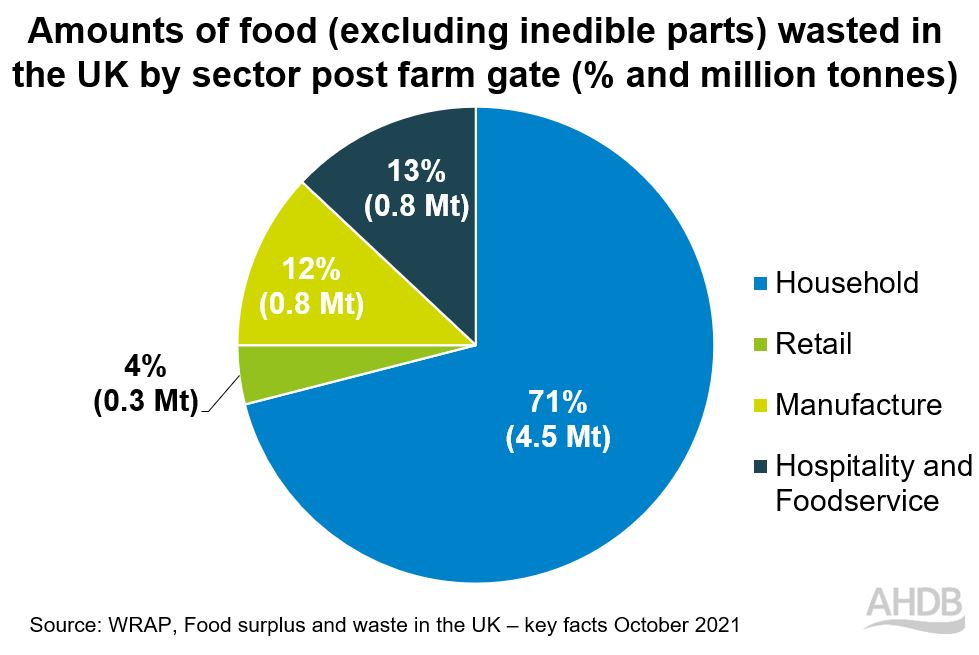- Home
- News
- Positive movements in UK food waste reduction reverse as Covid-19 restrictions are removed
Positive movements in UK food waste reduction reverse as Covid-19 restrictions are removed
Thursday, 21 October 2021
In the UK, 70% of food waste post-farm gate came from households, the equivalent of over £14 billion worth of food, and 20 million tonnes of Green House Gas (GHG) emissions a year (WRAP, August 2021). The Covid-19 pandemic and resulting lockdowns saw UK citizens improve their food management behaviours, which reduced household food waste. However, since restrictions have been removed, household food waste has increased and is now back in line with 2018 levels.

The impact of Covid-19
As consumers worked from home where possible and avoided shopping for food as frequently throughout the pandemic, 79% of UK citizens claimed to undertake additional food management behaviours throughout 2020, such as freezing foods, using up leftovers and batch cooking (WRAP, August 2021). In April 2020, self-reported food waste declined by 43% from November 2019, and remained significantly below pre-pandemic levels throughout 2020. However, since lockdown restrictions have been removed, consumers have dined out more and returned to the office. With more displaced meals (out of home/ on the go) and consumers claiming to be under more time pressure as lifestyles have become busier, the level of household food waste is now back in line with 2018 (WRAP, August 2021).
With 4.5 million tonnes of household food waste generated annually, are consumers watching their waste?
In June 2021, 30% of UK citizens were classified as having higher levels of food waste according to WRAP’s definition, compared to 20% in April 2020 (WRAP, August 2021). Higher levels of food waste are associated with younger age groups, young families, those eating out more frequently, those undertaking less food management behaviours, and those less confident in cooking ability.
AHDB research conducted by Blue Marble in August 2021 found that 66% agree that ‘making every effort to reduce the amount of food they throw away’. In addition, further research conducted by AHDB/YouGov (August 2021) found that of those who consider the environmental impact of food (66% of consumers), food waste is the second biggest consideration at 70%, falling slightly behind packaging and plastics at 78%.
Our research also highlighted that other uses of food waste such as feeding it to farm animals divides opinion. Only 24% preferred farm animals to be fed some food waste rather than crops like wheat or soya, compared to 33% who preferred feeding crops rather than food waste (Blue Marble, August 2021). The high level of those citing ‘neutral’ or ‘don’t know’ (43%) suggests this is not an area most consumers have considered. Additionally, 38% of those questioned are aware that feeding animals some types of food waste could cause diseases in livestock, suggesting some consumers could have underlying concerns with feeding animals’ food waste if not communicated carefully.
So, what can be done?
- Inspire consumers with recipes to use up leftovers, for instance leftovers from a Sunday joint of slow roasted pork could be used in the week in pork burritos, pork stir fry, or pulled pork burgers
- Encourage consumers to freeze foods at any time, for instance if a products use-by date is almost up, freeze it and use it later
- Encourage meal planning and checking what’s in the fridge/ cupboards before going food shopping
- Remind consumers that food waste is not just the food that ends up in the bin, but the land, water, and energy used to produce, process, and transport it.
Topics:
Sectors:
Tags:

